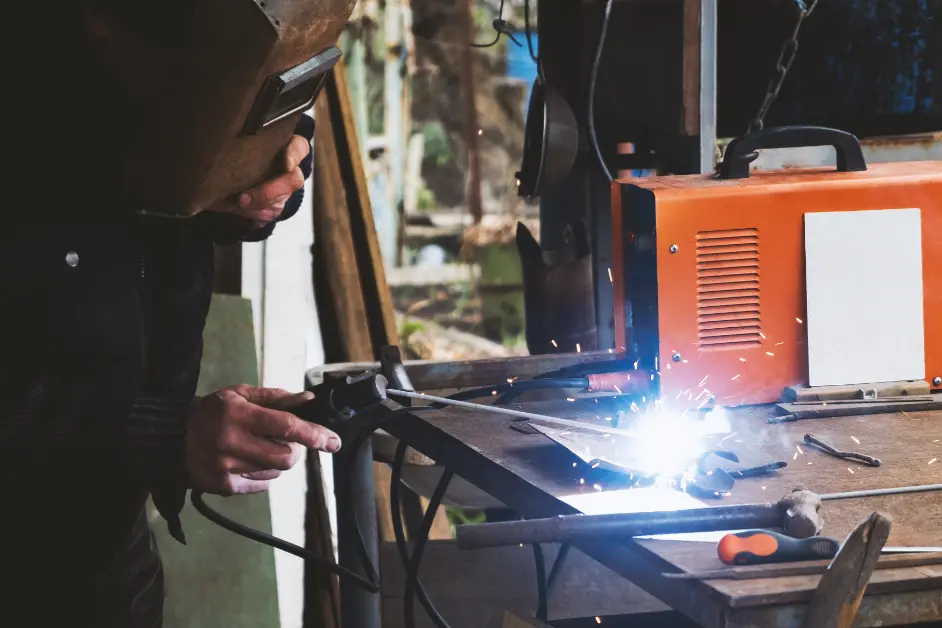Welding is a powerful and important skill. From building bridges to fixing cars, welding helps create strong connections between pieces of metal. But while welding can be exciting and rewarding, it also comes with some risks. The tools get hot, the sparks fly, and dangerous fumes can fill the air.
That’s why welding safety is just as important as welding skill.
Whether you’re just starting out or helping someone learn to weld, this guide will walk you through 10 simple but essential safety tips every new welder should know.
1. Always Wear the Right Safety Gear (PPE)
Before you even strike a spark, make sure you’re dressed for the job. This special equipment is called Personal Protective Equipment (PPE), and it protects you from burns, sparks, and bright light.
Here’s what you need:
Welding helmet: Protects your eyes and face from bright light and flying sparks.
Safety glasses: Worn under the helmet to protect your eyes when not actively welding.
Welding gloves: Made of leather to keep your hands safe from burns.
Long-sleeved flame-resistant shirt or jacket: Protects your arms and body from heat and UV rays.
Jeans or heavy work pants: Avoid wearing shorts or synthetic materials.
Work boots: Steel-toe boots are best; no sneakers or open-toed shoes.
Tip: Never wear clothes made of nylon or polyester—they can melt and cause serious burns.
2. Make Sure Your Work Area Is Safe
Your workspace should be clean, dry, and well-organized. A messy or cramped area increases the risk of accidents. Before starting, check:
Are there any flammable items (paper, oil, fuel) nearby?
Is there proper lighting and ventilation?
Are your tools in good condition and within reach?
Tip: Keep a fire extinguisher nearby—just in case.
3. Protect Your Eyes from Arc Flash
The welding arc is extremely bright, and looking at it with unprotected eyes—even for a second—can cause a painful condition called arc eye or welder’s flash. It’s like a sunburn on your eyeballs.
Always use a welding helmet with the correct shade lens. Auto-darkening helmets are great because they adjust to the light automatically.
Tip: Never let anyone near you watch the welding arc without eye protection. Always warn others before you strike a spark.
4. Ventilate Your Area to Avoid Breathing Fumes
Welding can release harmful gases and fumes. Breathing them in over time can damage your lungs and other organs. Always work in a well-ventilated area. If you’re indoors, use a fume extractor or exhaust fan to pull the smoke away from your face.
Tip: If you’re working in a tight space, wear a respirator for extra protection.
5. Keep Your Hands and Workspace Dry
Electricity and water do not mix. Since welding uses electricity to melt metal, keeping your hands and your workspace dry is super important. Wet gloves or tools can give you an electric shock.
Tip: If your gloves or clothes get wet, stop welding and change them before continuing.
6. Learn About Electrical Safety
Welders use machines that run on electricity, so it’s important to understand how to use them safely. Always:
Turn off your machine when not in use.
Check cables and wires for cuts or damage.
Never touch the metal electrode or wire with bare hands while welding.
Tip: Make sure your machine is properly grounded to prevent shocks.
7. Be Fire Smart
Welding can produce sparks that fly several feet. These sparks can catch fire if they land on something flammable—like paper, rags, or sawdust.
Here’s what you can do:
Remove flammable items from your workspace.
Use a fire-resistant welding blanket to cover anything nearby that could catch fire.
Keep a fire extinguisher or bucket of sand close by.
Tip: Check your work area for smoke or fire after welding, especially in corners and behind equipment.
8. Take Care of Your Tools
Your welding tools help you do your job—but only if they’re working properly. Damaged or dirty tools can cause accidents.
Before starting:
Check cables and connectors for wear.
Clean your welding gun or electrode holder.
Replace any broken parts before use.
Tip: Always unplug your equipment before doing any maintenance.
9. Don’t Be Afraid to Ask for Help
If you’re new to welding, there’s no shame in asking questions. In fact, asking for help shows you care about doing things the right way.
If something looks confusing or feels unsafe:
Ask a more experienced welder for advice.
Take a break and read your welding manual.
Watch a certified safety video or attend a workshop.
Tip: Remember, even the best welders were beginners once.
10. Stay Focused and Take Breaks
Welding requires full attention. A small mistake can lead to injury. Always stay alert while working. If you’re tired, hungry, or distracted, it’s better to take a break than risk making a mistake.
Tip: Never weld when you’re sleepy, angry, or in a rush. Safe welding is smart welding.
Final Thoughts
Welding is an amazing skill that lets you build, repair, and create. But it also involves heat, electricity, and gases that can be dangerous if not respected. By following these 10 simple safety tips, you’re not just protecting yourself—you’re setting yourself up to be a smart, responsible welder.
Whether you’re welding in a garage, a classroom, or a job site, safety should always come first. Wear your gear, stay alert, and keep your area clean. Over time, these habits will become second nature—and you’ll be well on your way to welding like a pro.
- Contact us at TMTVTS Tech Mech technical training school in Pakistan to get enroll in Welding.





